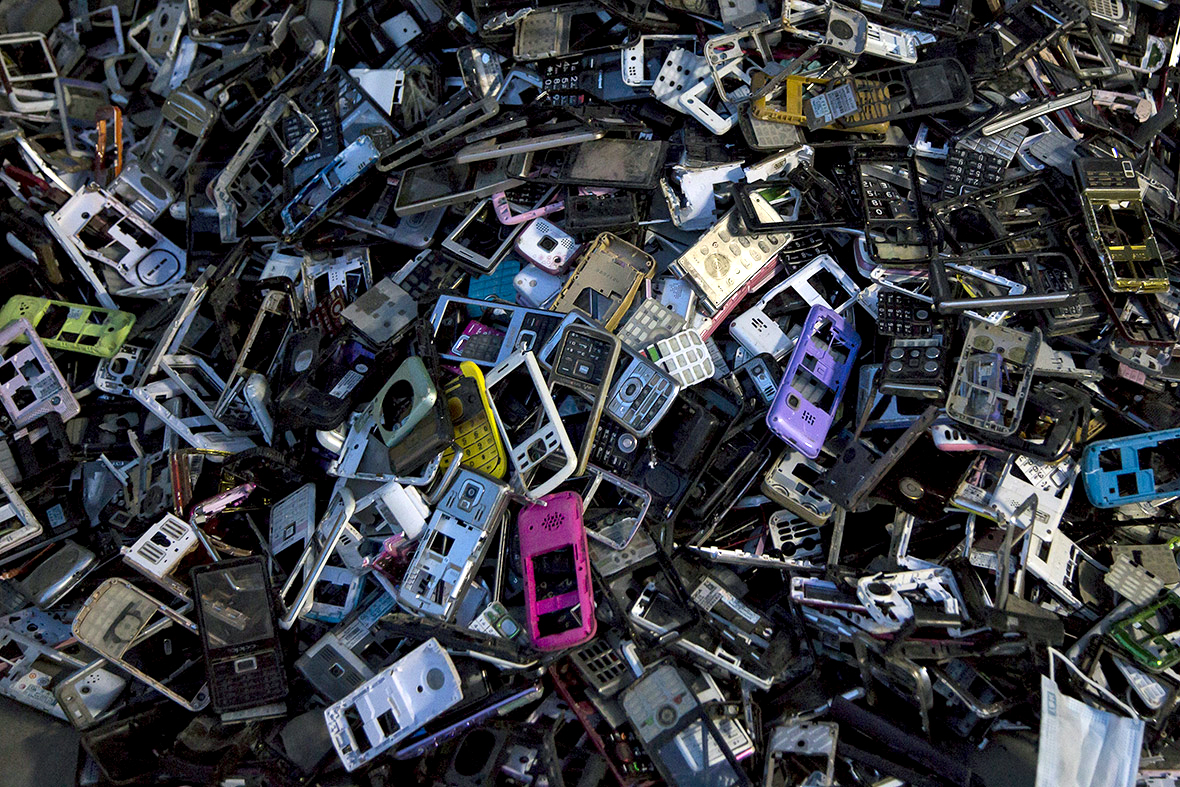
(Shanzhai Archeology - Research Database/Flickr)

(Shanzhai Archeology - Research Database/Flickr)
Look around any college campus and you’re sure to see dozens of students hastily walking, iced coffee in one hand, smartphone in the other. You have to hope all those plastic cups get recycled, but what about the phones?
The United States generated 6.3 metric tons of electronic waste in 2016, according to the latest installment of the Global E-Waste Monitor. The amount of electronics we discard is second only to China.
Electronic waste, or e-waste, is expected to be a growing problem as the rate of technological development continues to increase. E-waste includes discarded phones, computers, tablets, music players, printers, CDs, tapes, wires, and other items that require electricity to function.
Discarding electronics means discarding valuable metals such as aluminum, copper, silver, and even gold. According to the Global E-Waste Monitor, global e-waste was valued at more than $60 billion. Yet, only 20% of that waste is being disposed of properly, meaning most of that value is lost.
While e-waste constitutes a small portion of the waste that is ultimately found in landfills, it is responsible for the majority of hazardous waste. Electronics such as television monitors and computers are often latent with mercury, lead, and other harmful substances.
“That tiny percentage makes up the vast majority of what is dangerous to the environment. That’s why it’s so important to eliminate as much e-waste from going to landfills as possible,” says Nate Mulliner, Director of Business Development at E-Asset Solutions Computer and Electronics Recycling.
E-Asset Solutions, based in the Washington, D.C. suburb of Falls Church, Virginia, is one of many businesses working to reduce e-waste by refurbishing discarded items and recycling parts.
Use the R2 or E-Stewards locator tool to find a certified recycler near you.
Can’t find an electronic recycler close by? Check out the EPA’s database of retailers that take back used electronics or consider donating to a local thrift store.
Are you a student? Look into your university’s e-waste policy and resources.
Factory reset your iPod, iPhone, iPad, or Android phone.
Delete personal media from SD cards, flash drives, CDs, and other drives.
Remove hard drives and keep them in a safe place.
When in doubt, contact a trusted professional.
If you have a tendency to hoard your old electronics in an untouched dresser drawer, Mulliner recommends taking those items to be recycled before they become obsolete.
“First and foremost, stockpiling is a better option obviously than just getting rid of it,” Mulliner says. “Please do that. If you have one choice of either stockpiling it or throwing it away, stockpile it. But, you don’t want to do that for too long either.
“You don’t want to stockpile things until the best methods of recycling them go out of practice,” he says. “You go to recycle something that someone has a lot of practice recycling, that method is a lot faster, more streamlined, less invasive.”
Mulliner recommends finding a local electronics recycler who is certified by one of two governing bodies within the industry: R2 or E-Stewards. These certifications ensure that companies are using best practices for the planet, while also prioritizing one of the trickier elements of electronic recycling: data security.
“Data security is paramount, for our actual legal liability and for your safety,” Mulliner says. “Especially in this day and age when things like digital identity can be stolen so easily, it’s extremely important to properly get that taken care of.”
In compliance with R2 certification, every hard drive, cell phone, CD or other data-containing device is wiped clean in the first step of processing at E-Asset Solutions. If you are uncertain about a recycler’s data destruction policy, there are ways to protect your information before handing it over.
“For a lot of things with a solid-state hard drive, like an iPhone or an iPad, especially Apple products, the factory reset is 99.99% effective,” Mulliner says. “For anything with a hard drive, I would recommend some level of data destruction and you don’t have to go to an expert person to do that. There are wiping software programs you can download for free that are just as effective as something we would use.”
Certification guidelines also prevent electronic recyclers from taking hazardous waste to landfills or exporting it overseas. This addresses an important issue. Much of the world’s recycling waste was sent to China until the country started imposing bans on waste imports in 2018. Unregulated and unsafe electronics recycling practices had previously caused staggering rates of cancer-causing toxins in certain areas of the country. While the Chinese government attempts to control this humanitarian issue, Southeast Asia is at risk of taking on the world’s excess of hazardous material if waste is not handled responsibly.